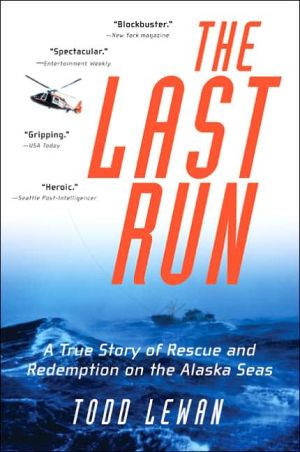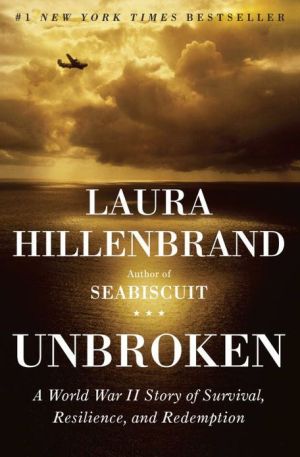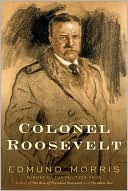Last Run
It was a desperate mission that made front-page headlines and captured the attention of millions of readers around the world. In January 1998, in the dead of an Alaskan winter, a cataclysmic Arctic storm with hurricane-force winds and towering seas forced five fishermen to abandon their vessel in the Gulf of Alaska and left them adrift in thirty-eight-degree water with no lifeboat. Their would-be rescuers were 150 miles away at the Coast Guard station, with the nearby airport shut down by an...
Search in google:
It was a desperate mission that made front-page headlines and captured the attention of millions of readers around the world. In January 1998, in the dead of an Alaskan winter, a cataclysmic Arctic storm with hurricane-force winds and towering seas forced five fishermen to abandon their vessel in the Gulf of Alaska and left them adrift in thirty-eight-degree water with no lifeboat. Their would-be rescuers were 150 miles away at the Coast Guard station, with the nearby airport shut down by an avalanche.The Last Run is the epic tale of the wreck of the oldest registered fishing schooner in Alaska, a hellish Arctic tempest, and the three teams of aviators in helicopters who withstood 140-mph gusts and hovered alongside waves that were ten stories high. But what makes this more than a true-life page-turner is its portrait of untamed Alaska and the unflappable spirit of people who forge a different kind of life on America's last frontier, the "end of the roaders" who are drawn to, or flee to, Alaska to seek a final destiny. Publishers Weekly Associated Press reporter Lewan offers a taut retelling of the 1998 story of five fishermen whose aging boat sank during an angry storm off the coast of Alaska, and of the predictably nail-biting Coast Guard rescue mission that followed. He capably explores the backgrounds and motivations of not only the small group of deckhands and their green skipper but also of their rescuers via helicopter, recreating believable dialogue and vividly evoking life on the harsh Alaskan coastline. He admirably resists the natural urge to overplay (toward the heroic) the fishermen's actions and unflinchingly looks at their alcoholism, marital discord and epic bouts of bad luck. They're not ennobled by their struggles, but rather simply challenged, changed and, in some cases, broken. But while Lewan focuses on the internal difficulties the men faced on their journey, he skimps on a detailed explanation of the role that overfishing played in the crew's decision to search out distant, more dangerous waters in their attempts to bring home a profitable-enough catch. Nonetheless, the book's flowing style and measured pacing succeed in making a familiar tale (fishermen go out, boat sinks, some don't make it) new and immediate, and in giving readers a sense of why the five fishermen were willing to risk so much for potentially so little. Agent, Owen Laster. (July) Copyright 2004 Reed Business Information.
The Last Run\ A True Story of Rescue and Redemption on the Alaska Seas \ \ By Lewan, Todd \ HarperCollins Publishers\ ISBN: 0060196483 \ \ \ Chapter One\ The body came in with no eyes or ears. There was no nose, either. No chin, no teeth -- not a single, distinguishing facial mark. There was, in fact, nothing to work with from the neck up, except for a few strands of brittle, soiled hair.\ "This is all?"\ "That's it."\ "Where did the kids find him?"\ "In a bear den."\ "What?"\ "That's right."\ "What the hell were they doing in a bear den?"\ "Hunting."\ "Some kids."\ It was chilly in the room. The air-conditioning might have been set too high. The air hung stagnant and smelled faintly of ammonia. Under the hard, fluorescent lamplight, the weathered bits of what once had been a man looked insignificant in repose.\ The investigator rubbed the gooseflesh on his arms. "Well," he muttered, "let's get this show going."\ "All right," the pathologist said. "Where's that recorder?"\ "Here."\ The pathologist leaned over the examining table. He wore thick glasses over red-rimmed, blue eyes; a white mask covered his mouth and nose. He had long, bony fingers gloved in latex. He pressed the record button.\ For the record he gave his name, Dr. Michael Propst, the date, August 14, 1998, the time, 2:14 P.M. He cleared his throat and began describing what he saw. There was noteworthy biological material. Specifically, bone fragments, hair and skin. The bone fragments showed predation—a large bear, most likely, judging by the depth of the marks. The bones, from an arm, a rib cage, a leg, appeared to be human. So did several of the hairs, although some of it had likely once belonged to a deer or a seal. There were fragments of a neoprene wet suit, also very much predated, among them a sleeve, a right mitten, a trouser leg and a large section of the upper chest. And there was clothing: two white socks, briefs, a T-shirt, sweatpants and a Casio watchband.\ Propst coughed.\ The box, he went on, also contained a fair amount of dirt, spruce needles and other organic debris from the crime scene. He paused the tape.\ "They bagged this stuff in a hurry," Propst said. "Can't say I blame them."\ "Anything else?" the investigator asked.\ "Yes."\ Recording again, Propst made note of five skin fragments. Some had decomposed more than others. One had had a fingernail still attached to it. The nail, he said, was most likely human.\ He stopped the tape and pulled down his mask.\ "Man didn't clean under his nails."\ "No. What else we got?"\ "Look here."\ Now the investigator, whose name was David Hanson, leaned over the table. On the chest of the suit was an emblem, a penguin, and the brand name IMPERIAL stitched across it.\ "The manufacturer," Hanson said.\ "Apparently."\ Hanson ran his forefinger along the inside of the collar and pulled out a tag. On it was a serial number, a lot number and a date of manufacture: March 23, 1989.\ "Not new," he said.\ "No."\ "And still wet," Hanson said. The material had a loamy smell, like decaying wood chips. "Hang all this stuff in the back room," he said to the lab assistant. "Let it dry out."\ As the assistant collected the shreds, Hanson worked his lip with his teeth. He was wearing his navy blue suit, with starched white shirt, tie and black leather shoes. He was neat, clean, shaved and stern. He'd been a cop six years but a member of the Anchorage crime unit just twenty-two days. He was twenty-eight and this was his first case. It would be nice to get it to go somewhere besides a missing persons file cabinet.\ He sighed.\ "Is this really all we've got?"\ "There is the skin," Propst said.\ "Right."\ Of the five skin fragments the biggest was no larger than a dime. Three others were brittle, yellow, and the last two as sturdy as wet newspaper.\ Hanson squinted at them.\ "So?"\ Propst scratched a fleshy jowl. "Well," he said, "they're human. Remember, they came from inside a survival suit."\ "I remember."\ "If the fingerprint lab could make prints from these fragments, then you could check the prints against what's on file."\ "And you think we could make prints from these little things?"\ Propst snapped off the latex gloves. "Ask Walter MacFarlane that."\ \ Walter MacFarlane laughed a smoker's laugh, coughed a smoker's cough and then smiled. A big, Savannah smile.\ "You've got to be kidding," he drawled.\ Hanson smiled back. "No."\ MacFarlane's smile soured. He sighed. "All right, what am I supposed to do with this?"\ "Make prints," Hanson said. "Or a print. Then ID it."\ MacFarlane reached for the magnifying glass. "What makes you think these came from fingertips?" He was examining the fragments now.\ "The fingernail."\ MacFarlane motioned to his apprentice, Dale Bivins. Bivins was short, with dark hair buzzed to the scalp, a prickly complexion and the eager eyes of a freshman on his way to his first college football game. He'd been at the crime lab almost a whole week.\ "Say, Dale," MacFarlane said, "why don't you take a look at some real old, real dried-out, real decomposed skin?" He removed his glasses, rubbed his eyes with his palm and took a step back.\ "David," he said, "you're asking me to ID a guy who's got enough skin left over to fill half a matchbox. Normally, that might be tricky. In this case, it'd be like winning the lottery. Look at this skin. As soon as we touch it, it's going to crumble like a cheap cookie."\ Propst said, "Walter?"\ "Yeah?"\ "Did you see this fragment?"\ "Which one?"\ "This one."\ MacFarlane put his glasses back on and squinted at the specimen on the table. "I did."\ "Could you work with it?"\ MacFarlane paused. He was trying to figure out if Propst was kidding. No, obviously not. MacFarlane shook his head.\ "All right," he said. "Send it on over. I'll give it a shot. But this one here's a million-to-one horse."\ Hanson nodded.\ "No promises, now," MacFarlane said.\ "No promises," said Hanson.\ Continues... \ \ \ \ Excerpted from The Last Run by Lewan, Todd Excerpted by permission.\ All rights reserved. No part of this excerpt may be reproduced or reprinted without permission in writing from the publisher.\ Excerpts are provided by Dial-A-Book Inc. solely for the personal use of visitors to this web site. \ \
\ From Barnes & NobleThe Barnes & Noble Review from Discover Great New Writers\ Audiences proved their love for stories set on the high seas years ago and continue to devour both fiction and nonfiction on the subject. Sebastian Junger's The Perfect Storm (discovered by us back in 1997) is a fine example of the thrills such stories provide. Now journalist Todd Lewan flies into the stormy fray with his tale of a daring helicopter rescue on the frigid Alaska seas. \ Years ago, when pitching Seabiscuit for the first time, we invoked The Perfect Storm, citing the triumvirate of subjects that came together to make something truly exciting occur. In the case of The Perfect Storm, the eponymous storm was the subject; in Seabiscuit, the horse that became an American icon emerged from the braided stories of three men who followed their instincts and took a risk on the equine underdog. In The Last Run, Lewan pulls together a number of strands -- the perspective of the fishermen, trapped on their crippled boat; the bravery of the Coast Guard teams who rescued them; and the tale of the hellacious storm itself -- to describe a spine-tingling adventure that was all too true. Lewan opens the book with two hunters who stumble onto fresh piles of bear scat and then spy the fragments of a human carcass; the tide of tension surges from there. Readers, hang on, you're in for a wild ride. (Fall 2004 Selection)\ \ \ \ \ \ James Bradley"This riveting book has it all ... suspenseful ... dramatic .... and touchingly human and humorous.\ \ \ Todd Balf"The big brawling storm and epic Coast Guard rescue in the Gulf of Alaska is an utterly heart-pounding story."\ \ \ \ \ Peter Nichols"A harrowing real-life tale of rescue on the high seas."\ \ \ \ \ Jason Kersten"Todd Lewan raises the standard for non-fiction survival stories. Hair-raising ... hilarious [and] engaging."\ \ \ \ \ New York Magazine"Blockbuster."\ \ \ \ \ Ft. Lauderdale Sun-Sentinel"A powerful story reported and told with extraordinary skill....will keep you turning the pages at a furious rate."\ \ \ \ \ Entertainment Weekly"Grade ‘A’. A spectacular maritime page-turner … one perfect storm of a book."\ \ \ \ \ Anchorage Daily News"[A] gripping sea rescue tale."\ \ \ \ \ Seattle Post-Intelligencer"THE PERFECT STORM transferred to Alaska, but with a much more heroic conclusion."\ \ \ \ \ Decatur Daily"The stuff of legends....A tale of genuine heroism...that you won’t easily put down."\ \ \ \ \ USA Today"A gripping account [that] reads like a novel."\ \ \ \ \ Publishers WeeklyAssociated Press reporter Lewan offers a taut retelling of the 1998 story of five fishermen whose aging boat sank during an angry storm off the coast of Alaska, and of the predictably nail-biting Coast Guard rescue mission that followed. He capably explores the backgrounds and motivations of not only the small group of deckhands and their green skipper but also of their rescuers via helicopter, recreating believable dialogue and vividly evoking life on the harsh Alaskan coastline. He admirably resists the natural urge to overplay (toward the heroic) the fishermen's actions and unflinchingly looks at their alcoholism, marital discord and epic bouts of bad luck. They're not ennobled by their struggles, but rather simply challenged, changed and, in some cases, broken. But while Lewan focuses on the internal difficulties the men faced on their journey, he skimps on a detailed explanation of the role that overfishing played in the crew's decision to search out distant, more dangerous waters in their attempts to bring home a profitable-enough catch. Nonetheless, the book's flowing style and measured pacing succeed in making a familiar tale (fishermen go out, boat sinks, some don't make it) new and immediate, and in giving readers a sense of why the five fishermen were willing to risk so much for potentially so little. Agent, Owen Laster. (July) Copyright 2004 Reed Business Information.\ \ \ \ \ Kirkus ReviewsAP features writer Lewan crafts a painful, exhilarating narrative from the ordeal of a fishing schooner that tried to cheat the weather forecasts in the Gulf of Alaska and got caught. In the winter of 1998, an old boat with bad gear and a hard crew set off for the Gulf of Alaska's Fairweather Grounds. No place could have been more inappropriately named. The Fairweather, 18 hours out of port, was a cluster of shoals in the open gulf known for good rockfishing, but venturing there in January was a dicey gamble. The gamble failed, the boat went south in the dark of night, and the five crewmembers went into 38-degree seas with rough waves and winds topping 100 miles per hour. Lewan masterfully evokes both the crewmembers and the approaching storm; occasionally he overcooks the metaphors ("the wind howled like a gut-shot wolf"), but for the most part he keeps the action real and terrifying ("the wind peeled their eyelids up and the salt water burned their eyes"). The author cuts back and forth between the men in the water and the three, count 'em, three helicopter rescue teams sent one after the other in an effort to pull them out. Lewan steals your breath as he describes the fandango inside a helicopter slammed by gale-force winds, the gradual loss of all bodily sensation in a frigid sea, the bizarre experience of castaways who rode up the wall of a rogue wave to actually see the rescue helicopter below their watery perch, its crew fighting to gain elevation. He also reveals a gratifying tie-in between one of the fishermen and one of the rescuers. Immediate and terrifying, so edge-of-the-seat readers will have creases in their glutei maximi. Agent: Owen Laster/William Morris\ \








